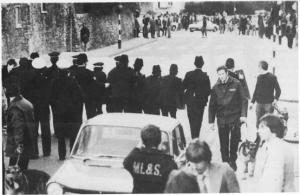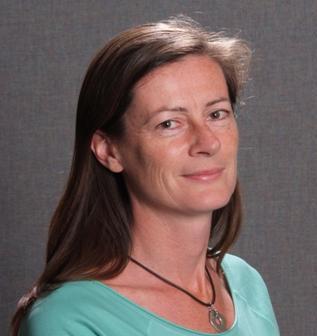In Bristol’s European Green Capital year, the University of Bristol and its Cabot Institute have been working with the Bristol Green Capital Partnership and its members to convene a series of four conversations between Bristol academics and city ‘thinkers’ from across public, private and civil society exploring how Bristol delivers the ‘future city’ – what capacities it needs to be resilient, sustainable and successful and how it can start to develop these in times of changing governance and tightened finances. The conversations will be reflected in a series of four blogs (the first below) and then brought together as a policy report for the Festival of the Future City in November. You can read other blogs from this series at the bottom of this blog.
——————————————–
In Bristol’s European Green Capital year, the University of Bristol and its Cabot Institute have been exploring new ways of engaging more widely with the city and the range of organisations that make up city life and, in particular, with the Green Capital Partnership and its members. One of these forms of engagement has been to convene a series of conversations between Bristol academics and city ‘thinkers’ from across public, private and civil society, to try to move the discussion about Bristol’s future beyond what we already know to what it really means to be a future sustainable city and what capacities Bristol needs for the future – and how it can start to develop these in times of changing governance and tightened finances.
Our first debate took the theme of ‘Devolution and new forms of governance’ on a beautiful sunny Bristol evening when an invited group of some 30 city people came together for the first of 4 conversations on the (sustainable) future of Bristol – its capacity, opportunities, needs and blockages. What follows are some of the big issues identified and the start of what we can do to address them.
We acknowledged that Bristol is, on the whole, a successful city, with a thriving economy, judged to be one of the best places to live, culturally vibrant and with a reputation for doing things differently – including being the only UK city to vote for a directly elected mayor in 2012. Bristol’s leadership is more visible locally, nationally and internationally now, it is a member of the UK ‘Core Cities Group’, and business finds it easier to work with – although not all parts of the city value these changes. Bristol also has another darker side, with high levels of child poverty, lower school achievement and a lack of investment in infrastructure.
Working together
For Bristol in particular, the current authority boundaries are a real problem with ‘stupid red lines’ cutting across the urban area, particularly to the north and east, dividing parts of the city out into other local authority’s control and creating arguments about the positioning and ownership of services. The various local government boundary changes have, over time, seen an evolution to the current four unitaries with boundaries that are historical but make little sense in 2015. We have an overall population of about a million, with people travelling to work, shop and play across the boundaries and now there is an opportunity and a need for more effective working together, that, in one participant’s words, it ‘makes total sense to be one entity’ with more devolved powers and budgets (as the Manchester metro-region is doing) which will allow longer term fiscal planning. At the moment, layers of bureaucracy get in the way of getting things done. If Bristol is the ‘capital’, it needs to show that it is working for the whole region, that it can be supportive and empowering of all the urban and rural parts. The question now is how to create mechanisms that facilitate enduring collaboration in a locally relevant way and which can withstand the buffeting of national policy changes
Moral purpose and the ‘dark side’
 |
| Police facing rioters in City Road, St Pauls. Source: Wikipedia. |
Finding out what stops action and who has the power
The low electoral turnouts show that people don’t currently connect well with their elected representatives and that more could be done to open those lines of communication and trust and improve the democratic process – meanwhile, so much interesting stuff is going on that isn’t done by the council at all but by other people.
Innovation in spite of rules
A visible and much publicized example of local action is in the Stokes Croft area but it’s not the only place. The Stokes Croft ‘anti-Tesco riots’ showed that people will get up and protest against what they don’t want but, in another part of the city, a Tesco Metro would be a welcome source of decent food. So we have to acknowledge that locally relevant approaches are needed and that means community led responses – as we are now seeing in Redcliffe, Barton Hill, Southmead, Lawrence Weston and other places around the city. But not all communities currently have the capacity to take the lead, so helping to develop ‘collective action’ at different levels is key. Neighbourhood partnerships are at best a partial success, working best where there are active communities, but the potential to engage and use the resources of local business to support communities is untapped.
What next?
One idea was that we should start with an issue or sector of concern such as transport or housing and explore it at all the different levels, working together to see how a new governance model would play out in reality. For example, take transport, this impacts on everyone’s quality of life and has a disproportionately high impact on the poorest people and their ability to move around the city and hence has a direct impact on equalities.
So, where does all this get us? We’ve talked about the relationship between communities and the city, the relationship between the city and its neighbouring councils and the relationship between that collective and central government – all of which need to be negotiated in the terms of possible devolutionary structures. We’ve recognized the flourishing of community innovation that will stand us in good stead as we move into a new city-region future whilst also needing to understand the powers and blockages that enhance or impede risk taking.
There are three more debates and through them we aim to develop and strengthen the relationship between the university and civil society in the city so that we can collaborate in the long term for the benefit of the city. It is also about a real concern for our city, taking advantage of the year’s Green Capital status to look at how Bristol (and other cities) can develop into the future – drawing on the knowledge and expertise galvanized in 2015 and trying to create a legacy that will live long after this year of activity and debate.
 |
| Caroline Bird |
Blog 2 – Delivering the ‘Future City’: collaborating with or colluding in austerity?

